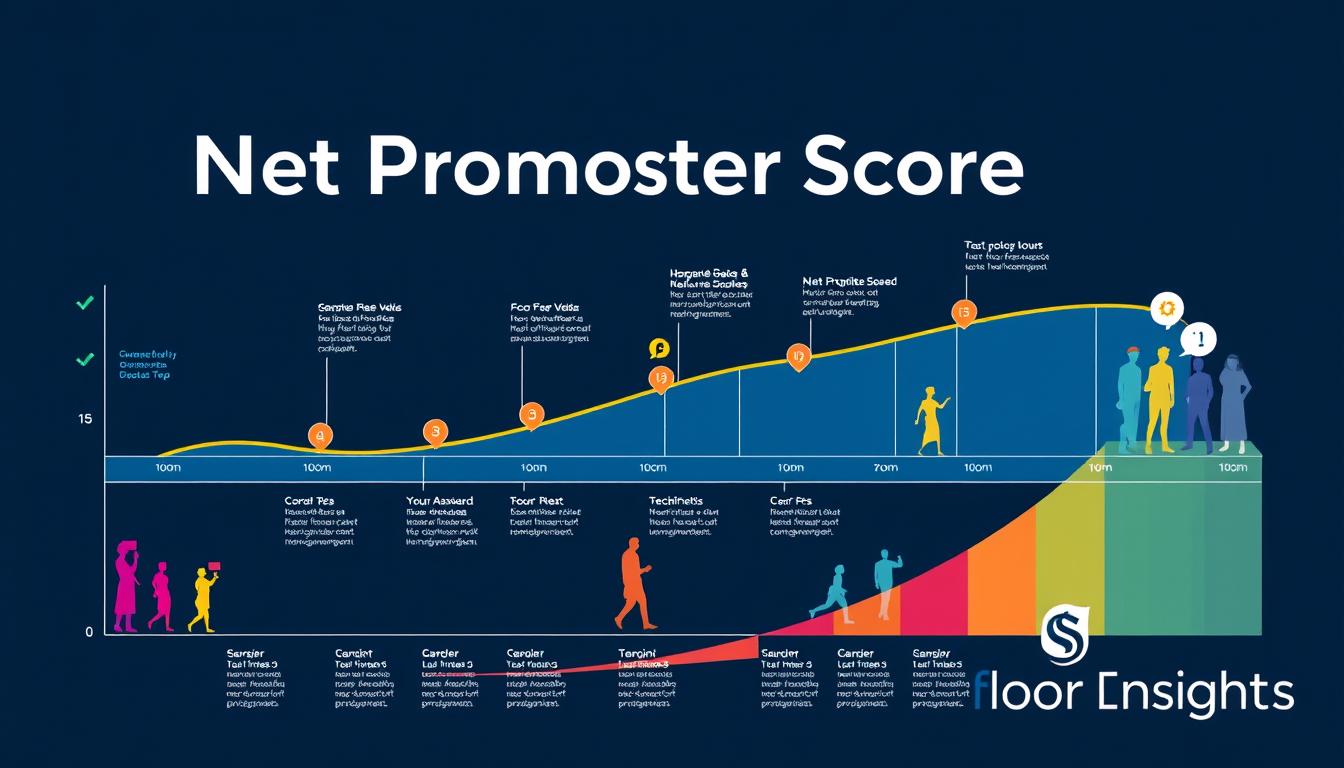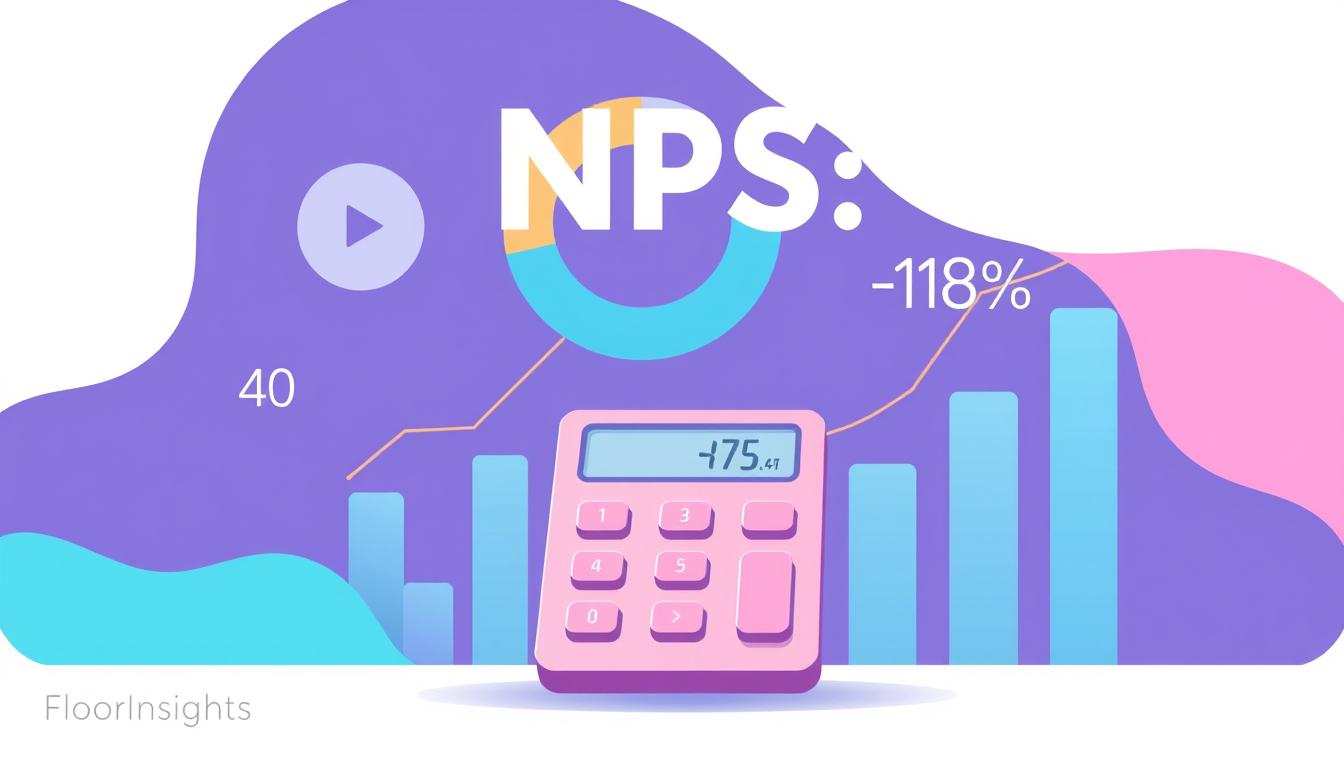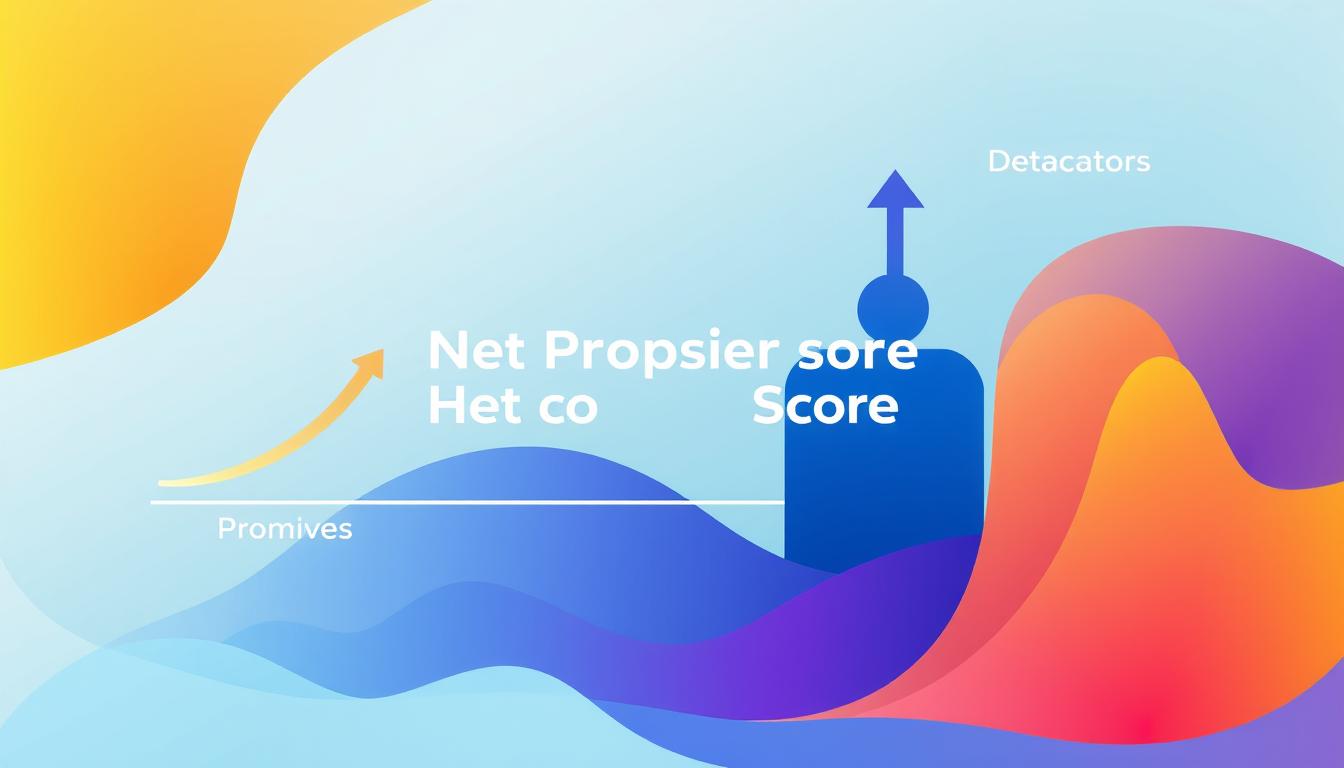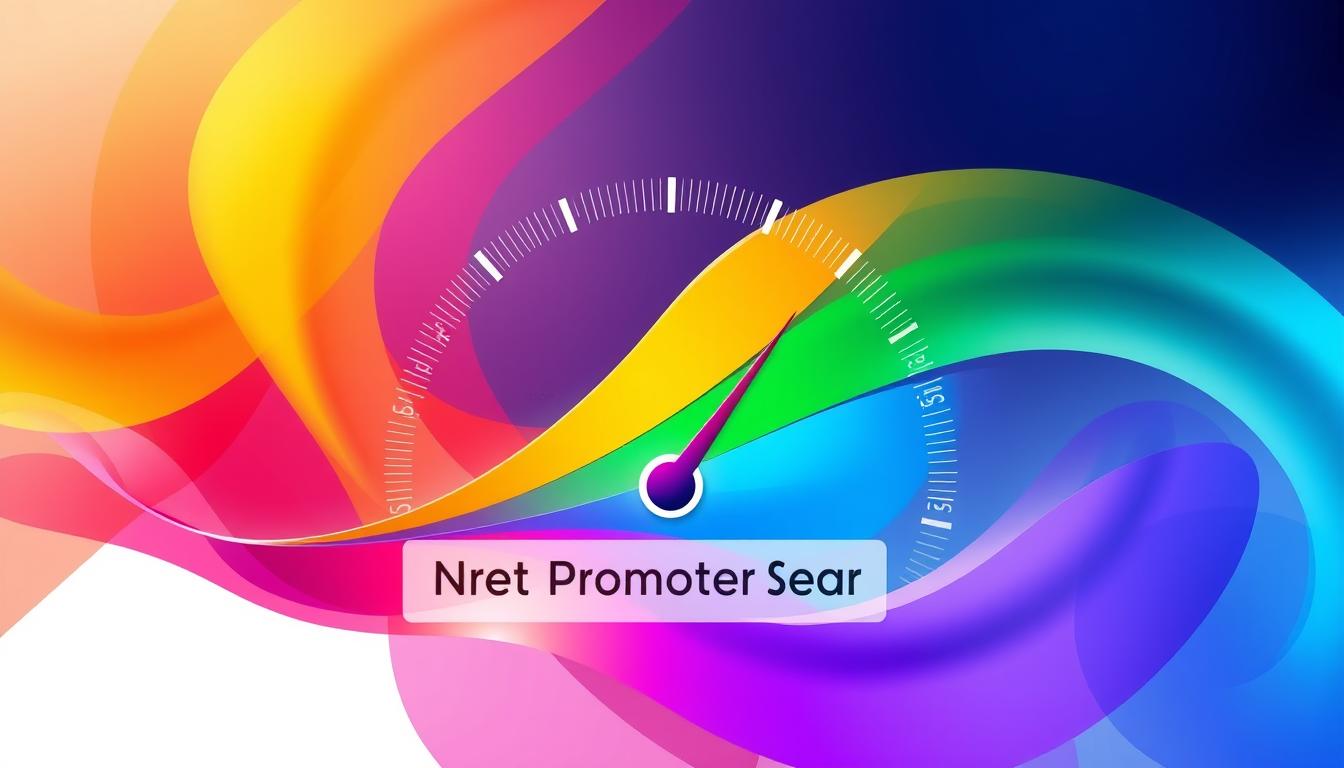In today’s competitive business landscape, understanding the customer journey is paramount to delivering exceptional experiences and fostering long-term loyalty. One powerful tool that can help us uncover critical touchpoints and gauge customer sentiment is the Net Promoter Score (NPS). By leveraging this metric, we can gain deeper insights into the customer experience and strategically enhance our offerings to meet their evolving needs.
Key Takeaways
- NPS is a widely adopted customer loyalty metric that measures the willingness of customers to recommend a product or service to others.
- Understanding the NPS methodology and its value in enhancing customer experience is crucial for businesses.
- Identifying key touchpoints in the customer journey using NPS data can help organizations optimize the customer experience.
- Interpreting NPS scores and segmenting customers based on their feedback can provide valuable insights for driving customer loyalty and advocacy.
- Integrating NPS with comprehensive customer feedback and closing the loop with respondents can further strengthen customer relationships.
What is Net Promoter Score?
Net Promoter Score (NPS) is a customer loyalty metric that measures the willingness of customers to recommend a company’s products or services to others. It provides valuable insights into the overall customer experience and can be a powerful tool for businesses looking to enhance customer satisfaction and drive growth.
Understanding the NPS Methodology
The NPS methodology is based on a simple question: “How likely are you to recommend our company/product/service to a friend or colleague?” Customers respond on a scale of 0 to 10, with 0 being “Not at all likely” and 10 being “Extremely likely.” Based on their responses, customers are then classified into three categories:
- Promoters (score 9-10): Loyal customers who are enthusiastic about the company and are likely to refer others.
- Passives (score 7-8): Satisfied but unenthusiastic customers who are vulnerable to competitors.
- Detractors (score 0-6): Unhappy customers who are unlikely to recommend the company and may even discourage others from using its products or services.
The Value of NPS in Customer Experience
Net Promoter Score is a powerful metric because it provides a clear, actionable indicator of customer loyalty and overall satisfaction. By understanding their NPS, companies can identify areas for improvement, track the impact of customer experience initiatives, and ultimately drive long-term growth through increased customer retention and advocacy.
NPS is a simple yet powerful metric that can provide deep insights into the health of your customer relationships.” – Harvard Business Review
By aligning their customer experience strategy with NPS, businesses can foster stronger, more valuable relationships with their customers, leading to a competitive advantage in the market.
Identifying Key Touchpoints in the Customer Journey
By analyzing Net Promoter Score (NPS) data, businesses can pinpoint the critical touchpoints in the customer journey where customers are most likely to become loyal advocates or detractors. Understanding these pivotal moments can be instrumental in shaping an exceptional customer experience and driving customer satisfaction.
To map the customer journey, we can leverage NPS insights to identify the key touchpoints that have the greatest impact on customer feedback and overall customer loyalty. These touchpoints may include interactions during the sales process, onboarding, product usage, and post-purchase support.
By analyzing NPS scores and comments across these various touchpoints, we can gain a deeper understanding of the customer’s emotional state and uncover areas for improvement. This information can then be used to optimize the customer journey and enhance the overall customer experience.
“Identifying and addressing critical touchpoints in the customer journey is essential for driving long-term customer satisfaction and loyalty.” – Industry Expert
To effectively leverage NPS data for this purpose, we can employ a combination of quantitative and qualitative analysis. This may include:
- Analyzing NPS scores at each touchpoint to pinpoint areas of strength and weakness
- Reviewing customer comments and feedback to understand the underlying drivers of their experiences
- Mapping the customer journey to visualize the flow and identify potential pain points
- Implementing targeted improvements to address the identified customer pain points
By taking this holistic approach, businesses can unlock a deeper understanding of the customer journey and make informed decisions to enhance the overall customer experience.
| Touchpoint | NPS Score | Key Insights | Improvement Opportunities |
|---|---|---|---|
| Sales Process | 45 | Customers feel the sales process is too lengthy and complex. | Streamline the sales process, improve sales representative training, and enhance communication with customers. |
| Onboarding | 65 | Customers are satisfied with the onboarding experience, but some report challenges with product setup. | Optimize the onboarding materials and provide more comprehensive product training to ensure a seamless customer experience. |
| Product Usage | 75 | Customers are generally satisfied with the product’s performance, but some report intermittent technical issues. | Invest in improving product reliability and responsiveness to customer support inquiries. |
| Post-Purchase Support | 60 | Customers are frustrated with the lengthy response times and inconsistent support quality. | Enhance the customer support infrastructure, provide additional training for support staff, and streamline the issue resolution process. |
How NPS Reveals Customer Sentiment
Net Promoter Score (NPS) is a powerful metric that provides valuable insights into customer sentiment. By capturing customers’ willingness to recommend your brand, NPS offers a window into their overall satisfaction and loyalty. In this section, we’ll dive deeper into interpreting NPS scores and segmenting customers based on their responses.
Interpreting NPS Scores
NPS scores range from -100 to 100, with a higher score indicating a more positive sentiment. A score above 0 is generally considered good, while a score above 50 is excellent. By analyzing your NPS, you can uncover trends and patterns in customer customer sentiment analysis, identifying areas for improvement and opportunities to enhance customer loyalty.
Segmenting Customers Based on NPS
NPS categorizes customers into three distinct groups:
- Promoters – Customers who score 9 or 10, and are likely to actively recommend your brand.
- Passives – Customers who score 7 or 8, and are satisfied but unlikely to recommend your brand.
- Detractors – Customers who score 6 or below, and are unhappy with your brand, potentially damaging your customer feedback and customer segmentation.
By understanding the distribution of your customers across these segments, you can tailor your customer experience strategies to meet the unique needs of each group, ultimately driving customer loyalty and advocacy.
NPS provides a simple yet powerful way to measure customer sentiment and identify areas for improvement in the customer journey.”
| Customer Segment | NPS Score Range | Characteristics |
|---|---|---|
| Promoters | 9-10 | Highly satisfied, likely to recommend |
| Passives | 7-8 | Satisfied, but unlikely to recommend |
| Detractors | 0-6 | Unhappy, potentially damaging to brand |
Leveraging NPS for Customer Loyalty
At the heart of any successful business lies a loyal customer base. By understanding the drivers of customer loyalty through Net Promoter Score (NPS), companies can implement targeted strategies to nurture Promoters, convert Passives, and address the concerns of Detractors. In the Indian market, this approach can be particularly impactful, fostering deeper customer engagement and strengthening customer advocacy.
NPS provides a powerful lens to identify the key touchpoints that shape the customer journey. By analyzing NPS scores and the underlying feedback, businesses can pinpoint the moments that matter most to their Indian customers, enabling them to enhance customer retention and drive customer loyalty.
For instance, companies can leverage NPS insights to optimize the onboarding process, address pain points in customer service, or enhance the overall product or service experience. By addressing the specific concerns of Detractors and converting Passives into Promoters, organizations can build a strong foundation of loyal, engaged customers who not only maintain their business but also actively advocate for the brand.
| NPS Segment | Loyalty Strategy |
|---|---|
| Promoters | Nurture and reward customer advocacy |
| Passives | Convert into Promoters through targeted interventions |
| Detractors | Address concerns and identify areas for improvement |
By aligning NPS with customer experience strategies, Indian businesses can drive sustainable customer loyalty and unlock the full potential of their customer base. The insights gleaned from NPS can inform product roadmaps, customer service initiatives, and marketing campaigns, ensuring that customer needs are at the heart of the organization’s growth and success.
Leveraging NPS to enhance customer loyalty is a game-changer for businesses in India. It enables us to truly understand and address the evolving needs of our customers, fostering long-term engagement and advocacy.”
Integrating NPS with Customer Feedback
To maximize the impact of Net Promoter Score (NPS), it’s crucial to integrate this metric with other customer feedback channels. By combining NPS with qualitative and quantitative feedback, businesses can gain a comprehensive understanding of the customer experience and identify key areas for improvement.
Closing the Loop with NPS Respondents
One of the most effective ways to leverage NPS is to actively engage with customers who provide feedback. By closing the loop with these respondents, businesses can demonstrate their commitment to customer experience and engagement, leading to improved customer retention.
- Acknowledge NPS feedback: Promptly respond to customers who have taken the time to share their NPS ratings and comments.
- Gather additional insights: Reach out to detractors and passives to understand the reasons behind their scores and explore opportunities for improvement.
- Address concerns: Actively resolve any issues or concerns raised by customers, showing that their feedback is valued and acted upon.
- Celebrate promoters: Recognize and reward customers who are highly satisfied and willing to advocate for the brand.
By integrating NPS with other customer feedback channels and closing the loop with respondents, businesses can gain a holistic view of the customer journey and take targeted actions to enhance customer experience and drive customer loyalty.
| Feedback Channel | Benefit |
|---|---|
| NPS | Measures overall customer loyalty and advocacy |
| Qualitative Feedback | Provides in-depth insights into customer sentiment and experiences |
| Quantitative Metrics | Offers data-driven insights to identify trends and patterns |
Integrating NPS with other feedback channels allows us to develop a comprehensive understanding of the customer journey and take targeted actions to enhance customer experience and drive customer retention.
Net Promoter Score Best Practices
Implementing an effective Net Promoter Score (NPS) program requires adherence to a set of best practices. By following these guidelines, businesses can ensure their customer satisfaction and customer feedback initiatives deliver tangible results and drive meaningful improvements in the customer experience.
One of the key best practices is to conduct NPS surveys at the right touchpoints in the customer journey. This involves identifying the critical moments that have the greatest impact on customer loyalty and satisfaction, and then soliciting feedback at those specific touchpoints.
- Establish a Feedback Loop: Create a closed-loop system that allows you to follow up with NPS respondents, address their concerns, and demonstrate your commitment to improving the customer experience.
- Segment Customer Data: Analyze NPS data to segment your customer base, enabling you to tailor your approach and response strategies based on the unique needs and preferences of different customer groups.
- Empower Frontline Staff: Ensure your customer-facing team has the knowledge and resources to effectively respond to NPS feedback, empowering them to address customer issues and drive positive change.
- Tie NPS to Business Objectives: Align your NPS program with your overall business goals, using the insights to inform strategic decision-making and drive continuous improvement in the customer experience.
By implementing these best practices, organizations can leverage the power of Net Promoter Score to identify key touchpoints, enhance customer loyalty, and ultimately drive sustainable growth and business success.
Implementing an effective NPS program is not just about collecting feedback, but about using those insights to drive real change and deliver exceptional customer experiences.
The Role of NPS in Customer Retention
Net Promoter Score (NPS) is not just a metric for measuring customer loyalty – it can also be a powerful tool for identifying at-risk customers and addressing their concerns before they churn. By closely monitoring customer sentiment through NPS data, businesses can proactively detect potential issues and implement targeted retention strategies to enhance customer loyalty and reduce customer attrition.
Identifying At-Risk Customers
The NPS framework provides a clear and actionable way to identify customers who are at risk of leaving. By segmenting customers into Promoters, Passives, and Detractors based on their NPS scores, businesses can quickly pinpoint those who are dissatisfied or on the verge of churning. This allows them to take immediate action to address the root causes of customer dissatisfaction and prevent further customer loss.
Analyzing the feedback and comments from Detractors is particularly crucial, as it can shed light on specific pain points or issues that are undermining the customer experience. Armed with these insights, businesses can tailor their retention efforts to address the unique concerns of at-risk customers and enhance their overall customer sentiment.
| NPS Segment | Retention Strategies |
|---|---|
| Promoters | Nurture loyalty and advocacy |
| Passives | Convert to Promoters through improved experiences |
| Detractors | Address pain points and resolve issues to prevent churn |
By aligning their retention strategies with the unique needs and sentiments of each NPS segment, businesses can optimize their efforts to drive customer retention and maintain a loyal customer base.
Using NPS to Drive Customer Advocacy
At the heart of a thriving customer-centric business lies a loyal base of advocates – those who enthusiastically promote your brand and services to their peers. By leveraging the insights from Net Promoter Score (NPS), we can cultivate a strong community of customer advocates who can help expand your reach and influence in the Indian market.
Promoters, identified through the NPS process, are your most valuable brand ambassadors. These devoted customers not only provide positive feedback but are also more likely to generate valuable customer referrals and customer engagement. By understanding what delights your Promoters, you can replicate their experiences, fostering customer loyalty and turning them into powerful advocates for your business.
To drive customer advocacy using NPS, consider the following strategies:
- Regularly engage with your Promoters, seeking their feedback and ideas to improve your products or services.
- Implement a customer referral program that incentivizes Promoters to share your brand with their networks.
- Showcase your Promoters’ success stories and testimonials, inspiring others to become advocates for your brand.
- Empower your Promoters with exclusive perks, such as sneak peeks or early access to new offerings, strengthening their connection to your brand.
By nurturing your Promoters and leveraging the insights from NPS, you can cultivate a loyal, engaged community of customer advocates who can help elevate your brand’s reputation and drive sustainable growth in the Indian market.
“Loyal customers, they don’t just come back, they don’t simply recommend you, they insist that their friends do business with you.” – Chip Bell
Case Studies: NPS Success Stories
Exploring how leading brands in India have successfully leveraged the Net Promoter Score (NPS) to enhance the customer experience, drive loyalty, and achieve measurable business outcomes. These real-world examples provide valuable insights and inspiration for organizations looking to implement effective NPS initiatives.
How Leading Brands Leverage NPS
Many prominent Indian companies have reaped the benefits of integrating NPS into their customer experience strategies. Let’s take a closer look at a few notable success stories:
- Reliance Jio – India’s largest telecom provider, Reliance Jio, has been using NPS to regularly collect feedback from its customers. By analyzing these insights, the company has been able to identify and address pain points, leading to a significant increase in customer satisfaction and loyalty.
- HDFC Bank – One of India’s leading private banks, HDFC Bank, has embedded NPS as a key performance indicator across its branches. This has enabled the bank to pinpoint areas for improvement, ultimately driving enhanced customer experiences and stronger customer retention.
- Flipkart – India’s e-commerce giant, Flipkart, leverages NPS to measure customer sentiment and identify opportunities to enhance its online shopping experience. By responding swiftly to customer feedback, Flipkart has been able to improve customer loyalty and foster lasting relationships with its user base.
These case studies demonstrate how top Indian brands have successfully utilized the Net Promoter Score to gain valuable insights, optimize their customer experience, and drive measurable business outcomes such as increased customer satisfaction, loyalty, and retention.
Implementing NPS has been a game-changer for our business. It has empowered us to make data-driven decisions that directly improve the customer journey and strengthen our competitive position in the market.”
– Aditya Birla Group, Chief Customer Officer
Aligning NPS with Customer Experience Strategy
To maximize the impact of Net Promoter Score (NPS), it’s crucial to seamlessly integrate it into our overall customer experience strategy. By aligning NPS with our broader customer experience initiatives, we can leverage customer feedback and insights to continuously improve the customer journey and deliver exceptional experiences.
One key aspect of this alignment is ensuring that NPS data is actively used to inform our customer experience decisions. This means regularly analyzing NPS scores, understanding the drivers behind them, and using those insights to make tangible improvements to the customer experience.
- Identify key touchpoints: Use NPS data to pinpoint the critical moments in the customer journey where experiences can be enhanced.
- Prioritize customer feedback: Prioritize customer feedback and act on the most valuable insights to drive meaningful change.
- Foster a customer-centric culture: Embed a customer-centric mindset throughout the organization, empowering employees to deliver exceptional customer experiences.
- Continuously iterate and improve: Regularly review NPS data, identify areas for improvement, and implement changes to the customer experience.
By aligning NPS with our overall customer experience strategy, we can create a robust feedback loop that enables us to better understand our customers, address their needs, and ultimately drive higher customer satisfaction and customer engagement.
“The customer’s perception is your reality.” – Kate Zabriskie
| Metric | Benchmark | Our Current Score | Improvement Needed |
|---|---|---|---|
| Net Promoter Score | 50 | 42 | 8 |
| Customer Satisfaction | 85% | 78% | 7% |
| Customer Retention Rate | 90% | 84% | 6% |
By aligning our NPS strategy with our broader customer experience initiatives, we can create a holistic approach that empowers us to better understand our customers, address their needs, and drive long-term loyalty and advocacy.

Conclusion
As we’ve explored, Net Promoter Score is a powerful tool that can help businesses in India identify critical touchpoints in the customer journey and drive customer loyalty and advocacy. By implementing NPS best practices and integrating it with your broader customer experience strategy, you can unlock valuable insights, enhance customer satisfaction, and position your brand for long-term success.
Throughout this article, we’ve examined the fundamentals of Net Promoter Score, its methodologies, and the inherent value it brings to understanding customer sentiment. We’ve discussed how NPS can be leveraged to pinpoint key touchpoints, segment customers based on their feedback, and foster customer loyalty and advocacy.
Ultimately, the integration of Net Promoter Score into your customer experience strategy can be a game-changer. By aligning your approach with NPS best practices and seamlessly incorporating it into your broader initiatives, you can elevate your brand’s reputation, strengthen customer relationships, and pave the way for sustainable growth in the Indian market. As you embark on your NPS journey, remember that it’s a continuous process of learning, adapting, and driving meaningful change for your customers.
FAQ
What is Net Promoter Score?
Net Promoter Score (NPS) is a customer loyalty metric that measures the willingness of customers to recommend a company’s products or services to others. It classifies customers into Promoters, Passives, and Detractors based on their responses to a single question: “How likely are you to recommend [company/product/service] to a friend or colleague?”
How does the NPS methodology work?
The NPS methodology involves asking customers to rate their likelihood of recommending a company on a scale of 0 to 10. Customers who respond with a 9 or 10 are considered Promoters, those who respond with a 7 or 8 are Passives, and those who respond with a 6 or below are Detractors. The NPS is calculated by subtracting the percentage of Detractors from the percentage of Promoters.
What is the value of NPS in enhancing customer experience?
NPS provides valuable insights into the customer experience by capturing customer sentiment and willingness to recommend a company. By analyzing NPS data, businesses can identify key touchpoints in the customer journey where customers are most likely to become loyal advocates or detractors. This information can then be used to tailor the customer experience and address areas of concern, leading to improved customer satisfaction and loyalty.
How can NPS data help identify key touchpoints in the customer journey?
By analyzing NPS data, businesses can map the customer journey and pinpoint the critical touchpoints where customers are most likely to become loyal advocates or detractors. These pivotal moments can make or break the customer experience, and understanding them enables companies to focus their efforts on improving the areas that matter most to their customers.
How can NPS data be used to interpret customer sentiment?
NPS provides valuable insights into customer sentiment by capturing their willingness to recommend your brand. By interpreting NPS scores and segmenting customers based on their responses, businesses can tailor their strategies to meet the unique needs of Promoters, Passives, and Detractors, ultimately enhancing customer satisfaction and loyalty.
How can NPS be leveraged to drive customer loyalty?
By understanding the drivers of customer loyalty through NPS, businesses can implement targeted strategies to nurture Promoters, convert Passives, and address the concerns of Detractors. This can lead to enhanced customer retention, fostered advocacy, and deeper engagement with the brand, especially in the Indian market.
How can NPS be integrated with other customer feedback channels?
To maximize the impact of NPS, it’s essential to integrate it with other customer feedback channels, such as qualitative and quantitative feedback. By combining these sources, businesses can gain a holistic understanding of the customer experience and close the loop with NPS respondents, leading to improved customer satisfaction and retention.
What are some best practices for implementing NPS effectively?
Effective implementation of NPS requires adherence to best practices, such as conducting NPS surveys, setting up feedback loops, and using NPS data to drive meaningful changes in the customer experience. By following these best practices, businesses can ensure their NPS program delivers tangible results.
How can NPS be used to identify at-risk customers and enhance customer retention?
NPS can be a powerful tool for identifying at-risk customers and addressing their concerns before they churn. By using NPS data to proactively monitor customer sentiment and detect potential issues, businesses can implement targeted retention strategies to enhance customer loyalty and reduce attrition.
How can NPS be used to drive customer advocacy?
Related Posts
- How to Use NPS to Drive Digital Innovation – NPS in Digital Transformation
- NPS and the Evolution of the In-Store Experience – NPS in Retail
- Integrating NPS Feedback into Your Email Marketing Campaigns
- How to Use NPS Data to Improve Product Features – NPS and Product Development
- Promoters, Passives, and Detractors: A Deep Dive
- Using NPS to Measure SMB Success in Local Markets – NPS for Small and Medium Businesses (SMBs)
- How NPS Can Help Validate Customer Feedback Trends – NPS and Customer Feedback Systems
- Using NPS to Measure the Success of Digital Initiatives – NPS in Digital Transformation






